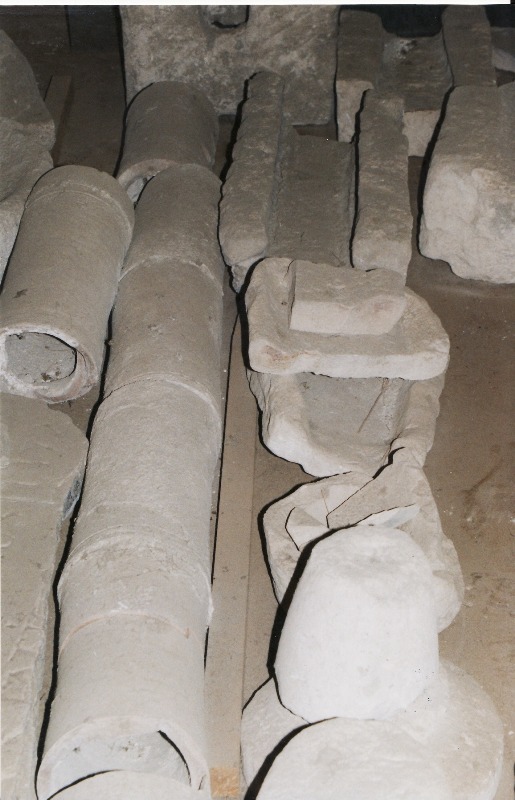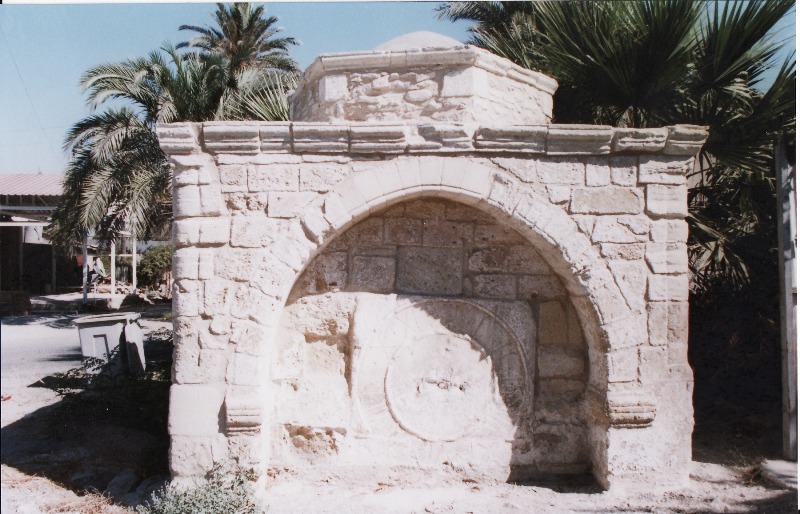Waterworks
As the early settlements of the 2nd millennium BC started to grow so did the need for water. The population kept increasing and water availability became a thorny issue for the inhabitants, especially during the long hot summers.
Due to the absence of any major stream around the port facilities, the early settlers dug their own wells.
The increasing water needs
In the beginning, water supply from these wells was sufficient and furthermore the water was always cool.
Storing water in the locally made clay water jugs, left in the shade and summer breeze, produced cool and pleasant drinking water.
In the early settlements of the Larnaca region, archaeologists found extensive stone protected wells, dating from the beginning of the 2nd millennium BC. They were found in almost every house and public building.
Some of these fine specimens of wells are considered to be the work of the religious authority of the city, which at the time was also the political authority.
Around these prehistoric wells, archaeologists found sacred gardens and evidence of intensive cultivation. The city’s ground water started to be exploited for organized agriculture. The overuse of well water for agriculture and the ensuing need to dig deeper wells caused a serious problem to the quality of the water, as these settlements were very near the sea.
The city became even bigger towards the end of the 2nd millennium BC. Conflicts with the neighbouring powers obliged the local authorities to build stone and mud-straw city walls around the 13th century BC. At the end of the 12th century BC the Mycenaean Greeks controlled the city and they constructed “cyclopean” walls, so called because they were made of very large stones giving the impression that they were put in place by the Cyclopes mythical giants.
During Archaic Times (700-480 BC), the population of the city within the walls increased considerably, mainly due to the arrival of large numbers of Phoenicians from nearby Sidon and Tyre to the protected city of Larnaca. This new demographic reality obliged the population to use a new method of water storage in underground argil sealed cisterns. These underground cisterns would be fed partly by rain water and partly from the nearby wells.
Storing water underground is a wise method, as water is always cooler and safer for drinking, especially in hot climates such as in Cyprus. Underground water deposits combine low temperatures and darkness, factors that diminish the development of bacteria or other dangerous micro-organisms.
The ancient aqueduct
An inscription on a tomb of the archaic period (700-480 BC), found in the Kition cemetery of the same period, refers to the king’s “Minister” who was responsible for the water supply of the kingdom, a title held by his family, according to the inscription, for six generations before him! Therefore, organised, efficient and institutionalised management of the city’s scare water resources and increasing needs can be traced back to before the Archaic Period.
Ensuring sufficient quantities of water was for most ancient civilizations a much greater priority than one would expect. Severe scarcity of water obliged the kingdom and its Minister for water supply to import the wisdom and experience of other nearby civilizations such as transporting water to the walled city from reliable but remote sources.
During the Persian rule of Cyprus (546-335 BC), the technology of Persian Qanats (underground aqueducts) was imported by the city. The end part of an extensive Persian Qanat was discovered by archaeologists in the early 1990s in the ancient port of classical Larnaca (480-300 BC). This sophisticated water supply system brought sufficient quantities of water from suitable sources outside the city walls. This qanat, being quite large and protected inside the city walls, satisfied the needs of the city’s population and of its busy military and commercial port.
During the Roman era, in the summer of 45 AD, Saint Barnabas and Mark the Evangelist passed by Kition. In the book “Acts of Saint Barnabas” written by Saint Mark, a detailed account of their visit to Larnaca is included. A one-hour stay at the public aqueduct of Kition to rest and to freshen up is clearly mentioned. The city was then at its most populated phase and public aqueducts were a necessity that the Romans and later the Byzantines systematically financed and encouraged.
Local water genius
Archaeological findings of Roman Larnaca show extensive distribution networks made of clay pipes. These pipes carried water through small valleys and hills even if it not seem that this could be possible. At least one distribution line of clay piping was found which transported water from a higher source through a valley and over a hill to the town of Larnaca.
Hydraulic wisdom pre-existed Pascal in Larnaca?
In Medieval times, according to the chronicle of “Leontios Machairas” written in the 14th century AD, grain mills operated in Larnaca, and the Luzinian King Peter I supplied his army and fleet with flour from Larnaca. Although not proven yet, it is assumed that these grain mills worked on the main Persian qanat of Larnaca, after having been repaired and used again.
The use of hydraulic power in water scarce Cyprus for the operation of grain mills was a real achievement for the medieval engineers of the island.
The Persian Qanat was still in use during Venetian times (1486-1570 AD). Proof of this is that recently discovered documents in the Venetian Archives, describe the project of re-routing this aqueduct so that it would not end up in the salt-lake. This was necessary as salt production, which was an important source of income, was negatively affected by the incoming water, delaying the drying and evaporation process needed for the collection of the salt.
The ottoman aqueduct
In Ottoman times (1571-1878) Larnaca, once again, became the main port and most populated centre of Cyprus. One of the governors at the time was Abu Imbrahim, better known as Bekir Pasha (1746-1748), who constructed an aqueduct for Larnaca. It was a 15 kilometre long water supply system involving a 7 kilometre underground tunnel, and over ground arches extending over another 8 kilometres.
The underground part of the Ottoman aqueduct, which survives until today, was made in line with the Persian qanat technology. The tunnel begins below the water bed of the Tremithos River. Seven kilometres further towards the city, the water came up to the surface.
For 8 kilometres the water flowed above ground atop an arched aqueduct which passed over three small valleys before reaching the city. These three series of arched constructions are all in excellent condition today.
The 15 kilometre long aqueduct powered two grain mills along its way and supplied 7 public fountains in the city with running water, only two of which exist today. These installations can be seen today and comprise a grand monument of collective historical water wisdom. The aqueduct and the mills were in full operation till the early 1950s.
The “administration document” of the Bekir Pasha aqueduct regulated its maintenance and ownership. Taking a closer look at this 18th century document and also considering the abovementioned archaeological and other evidence, one comes to the conclusion that the Bekir Pasha aqueduct was, to a large extent, an extensive renovation and extension of pre-existing installations of the city’s ancient aqueducts.
















